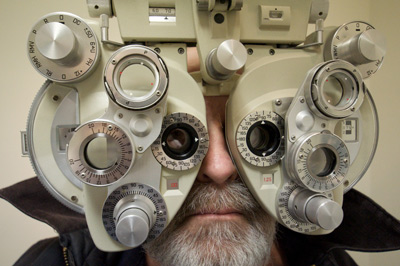For many older adults, vision prescription differs between eyes
Follow-up in older adults shows a high rate of anisometropia, or differing levels of visual abnormalities between eyes, reports a study in Optometry and Vision Science, official journal of the American Academy of Optometry. The journal is published by Lippincott Williams & Wilkins, a part of Wolters Kluwer Health.
“Uncorrected anisometropia is likely to lead to disturbances in binocular vision and stereopsis, which in turn may contribute to falls in the elderly,” concludes the new research, led by Gunilla Haegerstrom-Portnoy, OD, PhD, FAAO, of University of California, Berkeley. They emphasize the importance of appropriate vision correction in both eyes for older adults - especially at more advanced ages.
Study Confirms Increased Anisometropia with Aging…
The researchers analyzed vision examination results in 118 older adults followed up over 12 years - from an average age of 67 to 79 years at the end of the study. The study focused on the development of anisometropia, defined as a significant difference (one diopter or more) in prescription (refractive error) between the two eyes in one of four components.
During the study period, the prevalence of anisometropia increased significantly. For each of the four prescription components, the prevalence of anisometropia approximately doubled. As the participants approached 80 years of age, 32 percent met the study definition of anisometropia.
The differences in prescription components provided some clues to the causes of aging-related anisometropia. Most cases were related to differing degrees of farsightedness (hyperopia) between eyes. Others were caused by early but unequal blurring of the lens of the eye—even though none of the older adults in the study had eye lenses that met the usual clinical definition of cataracts.
 Within the age range studied, differences between eyes could begin to occur anytime, with no particular preference for any one age. In a few patients, anisometropia actually decreased during the study.
Within the age range studied, differences between eyes could begin to occur anytime, with no particular preference for any one age. In a few patients, anisometropia actually decreased during the study.
…Highlighting Need for Proper Correction in Both Eyes
Previous studies, based on cross-sectional (one-time) measurements, have suggested that the rate of anisometropia increases exponentially with aging. However, these studies provide no information on how the visual mismatch develops over time, or the specific refractive error components involved.
Dr Haegerstrom-Portnoy and coauthors cite previous studies showing that the prevalence of anisometropia in children is only two to four percent. They write, “Whatever the cause of the increase in anisometropia with aging, the fact that significant anisometropia is at least ten times more common in those over 75 years of age than in children needs to be clearly emphasized to clinicians.”
Anthony Adams, OD, PhD, Editor-in-Chief of Optometry and Vision Science, comments: “For older people a lack of correction of this prescription difference between the eyes may contribute to the increased frequency of falls that, in turn, can have a severe impact on health and even life expectancy.” Under current American Academy of Optometry guidelines, people over age 65 are considered a high-risk group, for whom visual examination and screening are recommended at least every two years.
Dr Adams raises special concern over the frequent use of “over-the-counter drugstore reading glasses” by older adults. He adds, “These ‘dime store readers’ are made to be generic, with identical focusing or magnification power in each eye—certainly not an ideal solution for at least 30 percent of the over-age-75 population who have differing visual requirements between eyes.”
###
About Optometry and Vision Science
Optometry and Vision Science, official journal of the American Academy of Optometry, is the most authoritative source for current developments in optometry, physiological optics, and vision science. This frequently cited monthly scientific journal has served primary eye care practitioners for more than 75 years, promoting vital interdisciplinary exchange among optometrists and vision scientists worldwide.
About the American Academy of Optometry
Founded in 1922, the American Academy of Optometry is committed to promoting the art and science of vision care through lifelong learning. All members of the Academy are dedicated to the highest standards of optometric practice through clinical care, education or research.
Connie Hughes
.(JavaScript must be enabled to view this email address)
646-674-6348
Wolters Kluwer Health